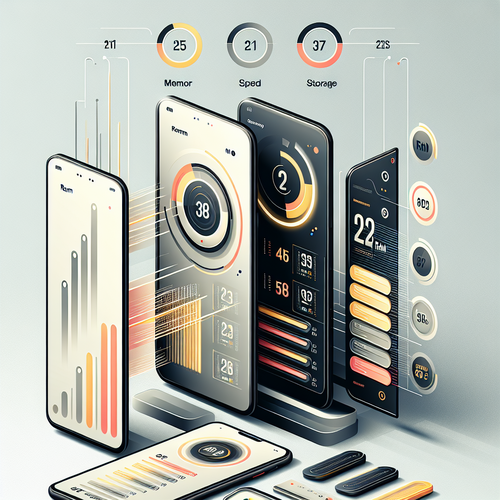
Best RAM and Storage Configs for Flagships: What's Enough?
Best RAM and Storage Configurations for Flagship Phones: What’s Standard and What’s Overkill?
In the rapidly evolving smartphone industry, flagship devices have set a high bar for performance and user experience. Essential components like RAM and storage are pivotal in determining a phone’s speed, responsiveness, and multitasking capabilities. This guide will delve into the ideal RAM and storage configurations for flagship smartphones, helping you understand what is considered standard and what might be excessive.
Prerequisites
- A basic understanding of smartphone specifications.
- Knowledge of how RAM and storage impact device performance.
- An interest in current smartphone trends and advancements.
Understanding RAM in Smartphones
RAM (Random Access Memory) is crucial for smooth multitasking and app performance. It temporarily stores data that your device is actively using, allowing for efficient access. In flagship smartphones, RAM sizes have increased significantly over the years.
Standard RAM Configurations
- 8 GB RAM: Currently, 8 GB is generally considered standard for flagship smartphones. It balances performance and energy efficiency, providing enough memory for daily tasks such as web browsing, social media, and gaming.
- 12 GB RAM: Many recent flagship devices offer 12 GB as a more powerful option, ideal for users who frequently multitask or use resource-intensive applications like mobile gaming or video editing.
Overkill RAM Configurations
- 16 GB RAM: While 16 GB can enhance performance, especially for gaming or heavy multitasking, it can be seen as overkill for common smartphone usage scenarios. Most users won’t notice a significant benefit over 12 GB.
- 32 GB RAM: Found in some gaming-centric devices, 32 GB is typically reserved for niche applications and is not necessary for general use. It’s better suited for heavy-duty users that run multiple high-performance applications simultaneously.
Exploring Storage Options
Storage capacity in flagship smartphones is equally vital as it determines how much data, applications, and media you can keep on your device. Variations in storage types (e.g., UFS, SSD) also influence performance.
Standard Storage Options
- 128 GB: This is the baseline for most flagship devices today, providing ample space for apps, photos, and media without needing constant management.
- 256 GB: A growing favorite among power users, 256 GB is perfect for storing high-resolution photos and videos, especially with the rise of multi-camera setups.
Overkill Storage Options
- 512 GB: While beneficial for those who consume a lot of media or install numerous apps, 512 GB may be excessive for the average user.
- 1 TB: Found in select flagship devices, 1 TB offers extensive capability for storage, but is often unnecessary for most users.
Choosing the Right Configuration
Your choice between these configurations should ultimately reflect your usage patterns:
- If you use your phone mainly for calls, messaging, and casual apps, an 8 GB RAM and 128 GB storage setup is typically sufficient.
- Should you stream high-definition content, take loads of photos, or game often, consider 12 GB RAM and 256 GB storage as a reasonable investment.
- For heavy-duty users, such as gamers or power users, consider the overkill options of 16 GB RAM paired with 512 GB or even 1 TB of storage.
Troubleshooting Common Issues
Upgrading smartphones can sometimes lead to issues related to insufficient RAM or storage, resulting in lag or performance dips:
- Monitor your RAM usage in settings to identify which apps are taking more memory.
- Manage storage by using cloud services or external drives to keep your device uncluttered.
Summary Checklist
- Assess your daily smartphone usage and determine essential RAM and storage needs.
- For mainstream users, 8 GB RAM and 128 GB storage suffice.
- Users seeking performance can benefit from 12 GB RAM with 256 GB storage.
- High-performance needs may justify 16 GB RAM with 512 GB or 1 TB of storage.
For more insights about smartphone features and how they affect usage, check out our article on Smartphone Privacy Features: Hardware-Based Protections in 2025.














